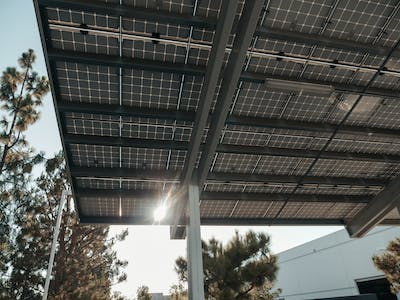Commercial solar refers to the use of solar panels to generate electricity for commercial or business purposes. This can include powering buildings, factories, warehouses, and other commercial properties.
Commercial solar works by converting sunlight into electricity through the use of solar panels. The panels contain photovoltaic (PV) cells, which convert the energy from the sun into DC electricity. This electricity is then converted into AC electricity and can be used to power a building or fed into the grid
The benefits of commercial solar include reduced energy costs, increased energy independence, lower carbon emissions, and a positive impact on the environment. In addition, many commercial solar systems can provide a reliable source of power even during power outages.
The cost of commercial solar can vary widely depending on a number of factors, such as the size of the system, the location, and the installation costs. However, the cost of solar has decreased significantly in recent years, making it a more affordable option for businesses.
There are a number of incentives available for businesses that install solar, including a 30% federal tax credit, state and local rebates, and grants. In addition, many utilities offer incentives for businesses that generate their own renewable energy.
The installation time for a commercial solar system can vary depending on the size and complexity of the system. However, most installations take several weeks to several months to complete.
Commercial solar systems require very little maintenance beyond occasional cleaning and inspections. Most systems come with a warranty that covers any major repairs or replacements.
Yes, a properly sized commercial solar system can generate enough electricity to power a business, depending on the business’s energy usage and the size of the system.
Excess electricity generated by a commercial solar system can be fed back into the grid and sold to the utility company through a process known as net metering. This allows businesses to offset their electricity costs and potentially earn money by selling excess energy.
Commercial solar panels are designed to last for 25-30 years or more. However, their efficiency may decline slightly over time, which can reduce the amount of electricity they generate
While this might have held some truth in the earlier days of solar energy adoption, prices have remained relatively stable in recent years. Solar panel performance is now so efficient that future improvements are likely to be more incremental.
Right now, there are lucrative federal solar incentives that will decrease dramatically in the next few years. Combine these with increasing utility prices, and the real question becomes: how much money does your company stand to lose while waiting for small improvements in pricing and efficiency?
The three most popular ways to pay for a commercial solar system fall into one, or a combination of, the following options: cash, loans, or a PPA (power purchase agreement). We recommend choosing a cash purchase whenever possible as it offers the most favorable returns, simplifies ownership, and maximizes solar tax incentives.
Second to cash, low-interest loans, or lines of credit offer the next best ROI on your solar investment. We recommend financing only the necessary portion of the net cost after incentives to achieve the best payback.
Power purchase agreements (PPAs), also known as solar service agreements, are a common way to finance solar installations at commercial and institutional facilities in certain states. Sigma offers PPA programs and financing businesses and qualified 501 (c)(3) non-profits, municipalities, and schools.




© 2022 Created with NCIT Solutions